
One-size-fits-none – The necessity of market segmentation
Dr Andries Noeth
(Ph.D. – Research Psychology)
Summary
This article explores the different types of market segmentation, the benefits gained from segmenting consumers, and the ideal way to use segmentation in any business.
Introduction
Are consumers buying what you are selling? Finding the perfect fit between your value offering and the needs of consumers is an art… backed by the latest science.
What is market segmentation?
Market segmentation is the practice of dividing a large group of people (population) into subsets of people (segments). These segments are developed based on specific characteristics that everyone in the segment shares. These characteristics can be demographics, psychographics, hobbies, behaviour, habits, interests, or needs.
Contemporary businesses have learned that they cannot be everything to everyone
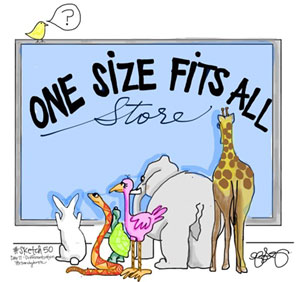
The adage “one-size-fits-all” has been turned on its head. These days “one-size-fits-none”.
This is where segmentation comes into its own. It allows businesses to focus their efforts, resources, products, and services on a specific group of people (chosen segment) that will actually buy what they have to offer because it fulfils a specific need. Segmentation is a powerful tool for businesses that want to build innovative customer offerings that address an unmet need in the market.
Homogeneity and Heterogeneity
One of the key features of market segmentation is homogeneity and heterogeneity. This simply means that consumers in a segment should be homogeneous (the same) and consumers in different segments should be heterogeneous (different).
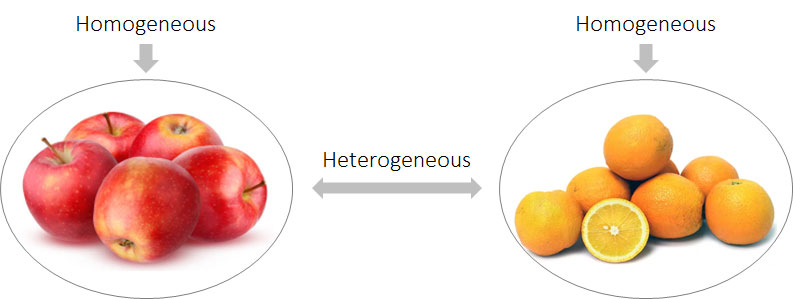
While “apples” can be divided into different types of apples (Granny Smith, Red Delicious, etc.) and each individual apple also has its own characteristics, they all form part of the fruit type “apples” (Binomial name: Malus), which is different from oranges (Binomial name: Citrus). If we decide to segment the fresh produce market differently, apples and oranges can fall in the same segment (fruit) which is different from vegetables.
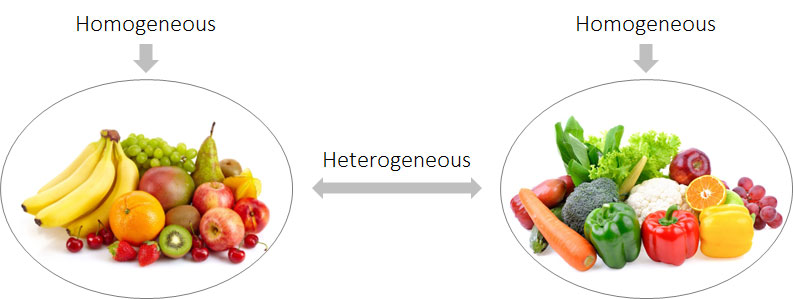
So, deciding on which criteria to use for segmentation is extremely important because it places consumers in the same or different segments. Broadly speaking there are 6 types of criteria that can be used to segment a market.
Types of segmentation
These different types of segmentation can be arranged on an XY axis denoting their difficulty in execution and their usefulness for businesses.
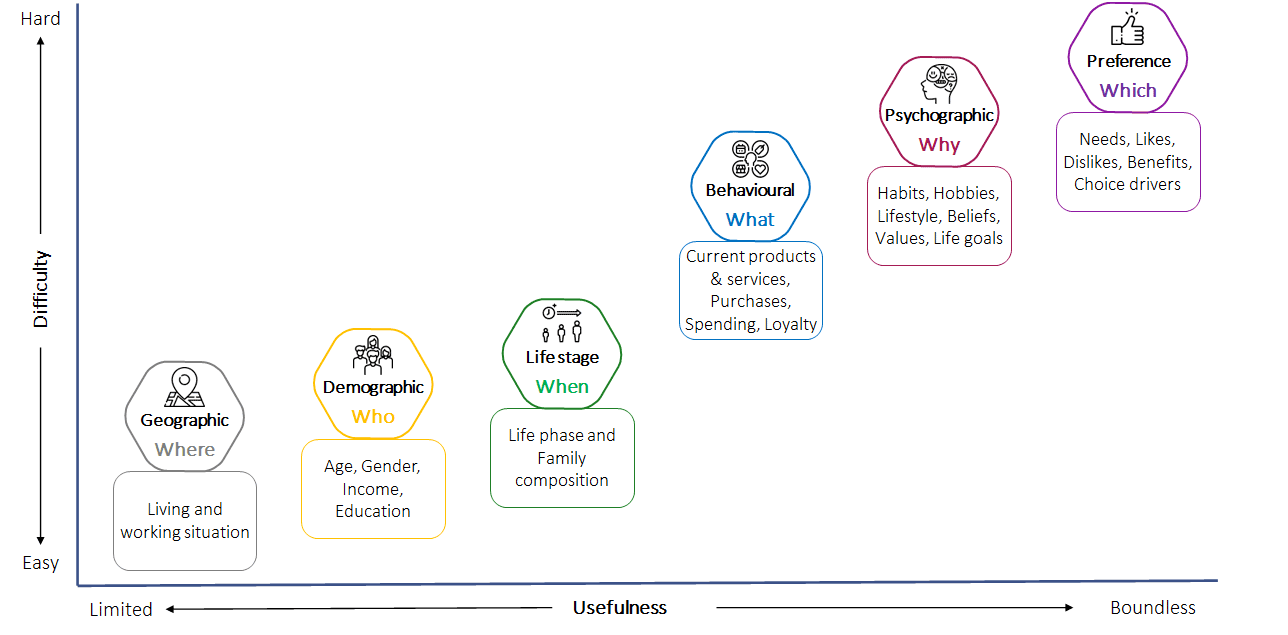
Geographic-, Demographic-, and Life stage segmentation is the easiest to execute and that is why most businesses use this as their segmentation criteria. This strategy presumes that males and females, people in different age groups and people in different income groups think and behave differently. We all know that this is not the case (as illustrated in the below example).
Conversely, Behavioural, Psychographic, and Preference segmentation have their roots in cognitive and behavioural psychology and are more focused on what consumers believe and how they think and behave rather than their physical characteristics. While these types of segmentation are more difficult to execute correctly, they are far more powerful in helping businesses to differentiate between consumers on aspects that are important to them because they are based on:
- Intrinsic motivators of high personal relevance
- Individual needs, desires, and priorities that shape our decision-making
- Personal core values, beliefs, and principles acquired throughout our life that do not change easily
- Goals and objectives that consumers want to achieve
- Heuristics that are used as a framework to make satisfactory decisions quickly and effortlessly
- Cognitive biases based on previous observations and generalisations that may lead to inaccurate judgments and illogical decisions
These segmentation methods are more powerful than traditional segmentation methods (Geographic, Demographic and Life-stage) because they are based on consumers’ decision drivers.
The example of Kate and Mary
Kate and Mary share the following geographic, demographic, life stage and some behavioural characteristics.

Using these typical segmentation criteria, we would have placed Kate and Mary in the same segment and targeted them the same way. However, when looking at psychographic-, preference- and some other behavioural constructs we can clearly see that there are important differences between Kate and Mary.
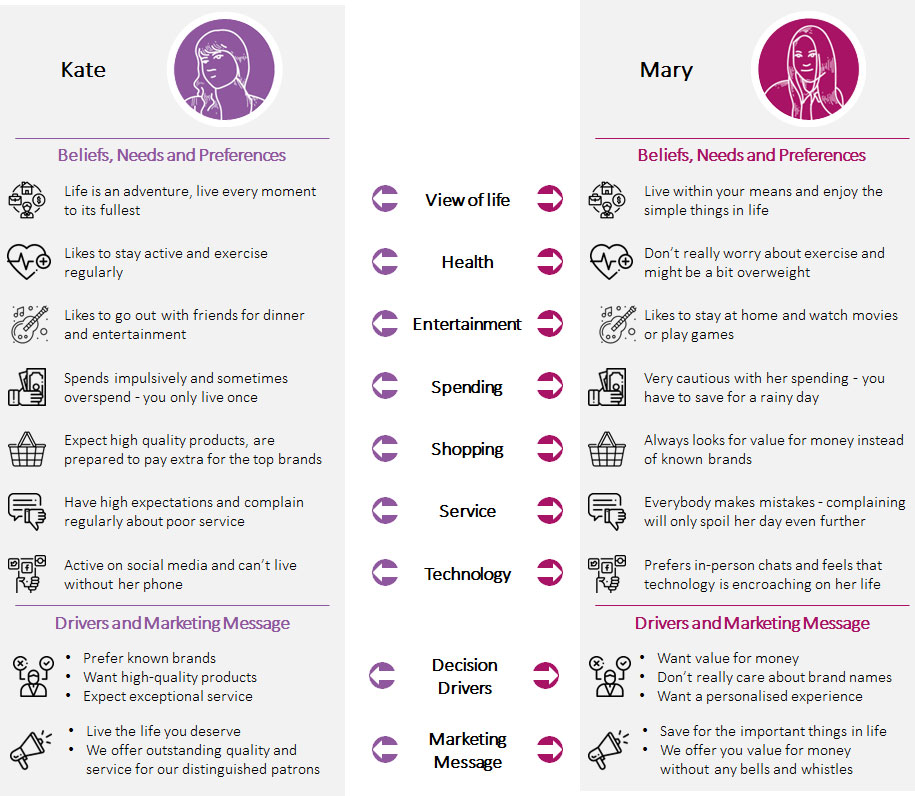
Kate and Mary value different things in life. As such, they have different drivers that motivate and influence their behaviour. Understanding these drivers and motivators for different segments allows the business to have a value proposition and marketing message that resonates with consumers’ internal drivers and translates into more sales.
The benefits of Behavioural-, Psychographic- and Preference Segmentation
While there are countless benefits to segmenting a market, we believe the following 7 are the most valuable:
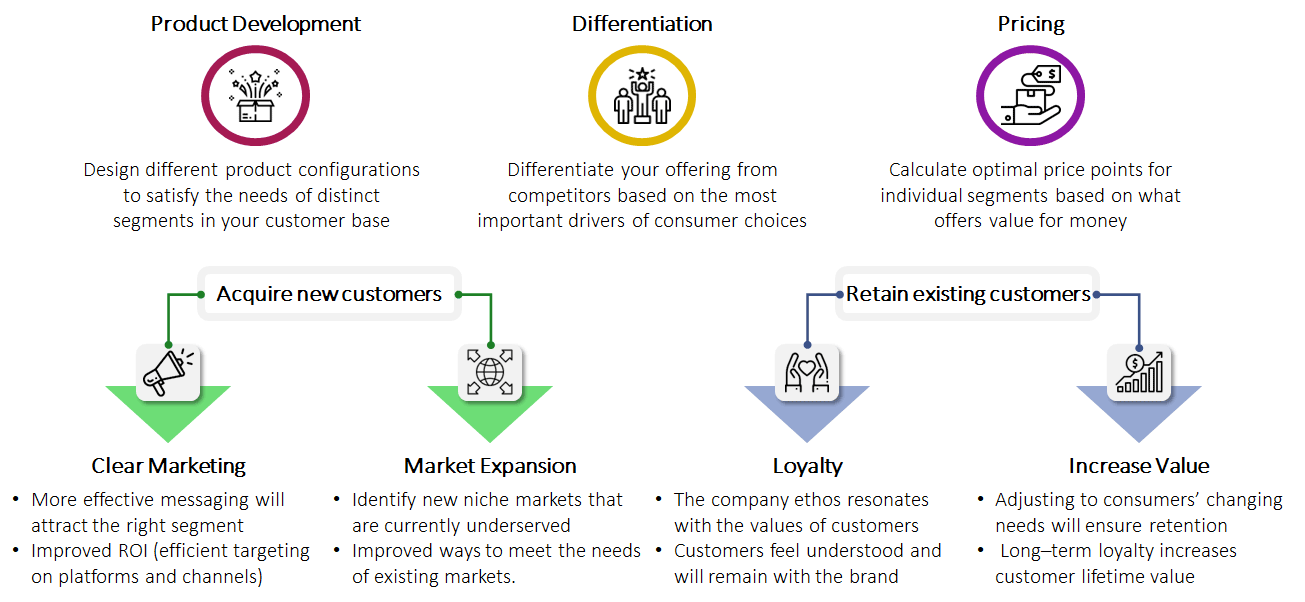
Best practices in segmentation usage
While segmentation provides valuable insights, it is important to note that it is only the starting point in the widely used model of marketing strategy known as STP (and we add M). Segmentation should be followed by evaluating the size and potential of each segment and deciding which segments you want to target. Whether you decide to target one segment or several segments, the next step is to optimally position your brand/product/service correctly in the market. That is, differentiated from competitors and more attractive to potential customers. The final step in the process is to develop marketing messages that resonate with your target segments and utilising their preferred marketing channels and media sources to communicate your message.

In summary
Market segmentation can be an extremely powerful business improvement strategy if executed correctly. Businesses must be clear about what they want to achieve with their segmentation strategy because it informs the type of segmentation that will be done and how the results will be implemented. The objectives of the segmentation will inform which segmentation criteria should be used.
Market segmentation can provide companies with a sustainable competitive advantage if they adhere to the following guidelines:
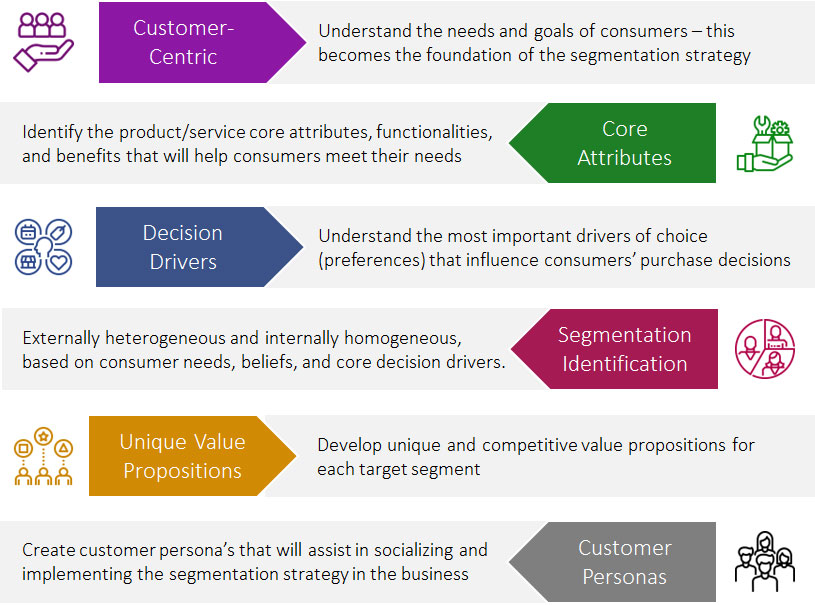
Contact Newway insight
Newway Insight specialises in customer value proposition development and market segmentation based on the needs of consumers. This has proven to be one of the most effective strategies for companies to gain a sustainable competitive advantage. Contact us for more information.
